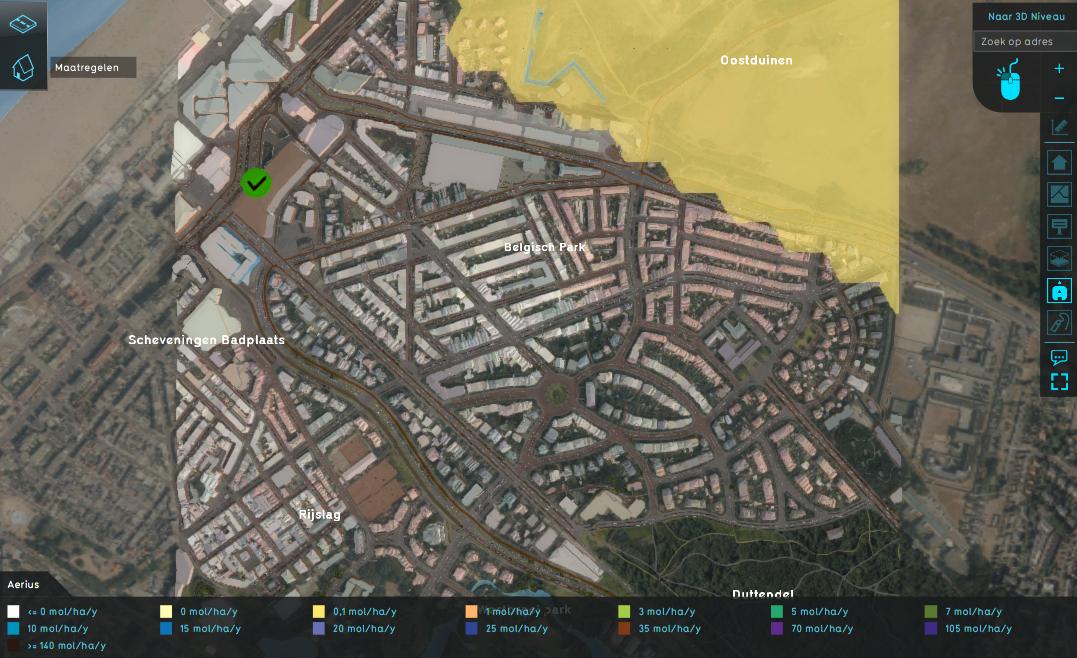Aerius Module: Difference between revisions
Jump to navigation
Jump to search

No edit summary |
No edit summary |
||
| (30 intermediate revisions by 6 users not shown) | |||
| Line 1: | Line 1: | ||
{{ | {{unavailable}} | ||
[[File:nox_result_type.jpeg|thumb|420px|right| | {{Aerius Module buttons}} | ||
The Aerius module | [[File:nox_result_type.jpeg|thumb|420px|right|link=https://youtu.be/2ib4KZ_ji6k|Video of the [[Aerius Overlay]] (Dutch only)]] | ||
The Aerius module calculates NOX and NH3 deposition on Natura 2000 areas (in the Netherlands) by using the [https://connect.aerius.nl/api/doc/ AERIUS Connect Api], version 2020. Via this API, calculations can be executed directly on the calculation heart of the [https://calculator.aerius.nl/calculator/ Aerius Calculator]. | |||
The Aerius module can for example be used for the following scenarios: | |||
* Calculate the emissions and nitrogen deposition on Natura 2000 areas for a new building, based on the type, size and way of heating of/in the building. | |||
* Calculate emissions and nitrogen deposition on Natura 2000 areas for the construction and usage of new roads, based on the increase of traffic per traffic category and type of road | |||
* Calculate and visualize the emissions and nitrogen deposition for the different phases (construction phase and usage phase) of a new building plan. | |||
{{article end | |||
|seealso= | |||
* [[Aerius Overlay]] | |||
}} | |||
* [[ | |||
Latest revision as of 13:55, 3 November 2023
This functionality is deprecated and will be removed in the future.

Video of the Aerius Overlay (Dutch only)
The Aerius module calculates NOX and NH3 deposition on Natura 2000 areas (in the Netherlands) by using the AERIUS Connect Api, version 2020. Via this API, calculations can be executed directly on the calculation heart of the Aerius Calculator. The Aerius module can for example be used for the following scenarios:
- Calculate the emissions and nitrogen deposition on Natura 2000 areas for a new building, based on the type, size and way of heating of/in the building.
- Calculate emissions and nitrogen deposition on Natura 2000 areas for the construction and usage of new roads, based on the increase of traffic per traffic category and type of road
- Calculate and visualize the emissions and nitrogen deposition for the different phases (construction phase and usage phase) of a new building plan.




